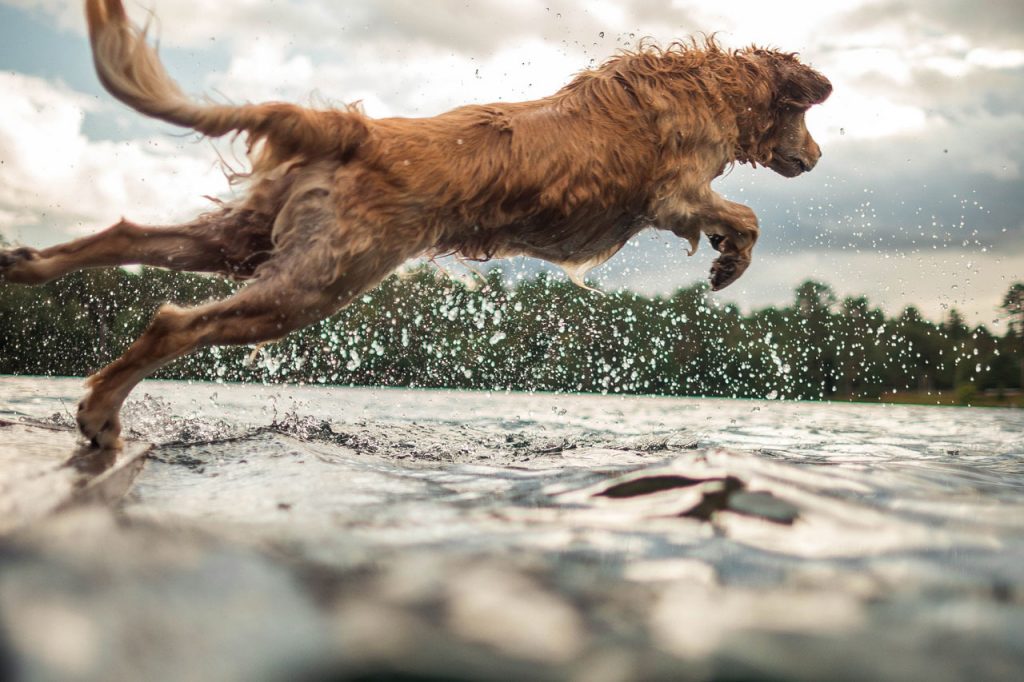The iliopsoas muscle consists of the fusion of the iliacus and psoas major muscles. The psoas muscle attaches along the underside of the backbones, and the iliacus attaches on the inner side of the pelvis. These two muscles join together and form a common tendon that attaches onto the lesser trochanter of the thigh bone (femur). The function of this muscle is to externally rotate and flex the hip joint. Animals can function without this muscle.
Iliopsoas muscle tears are a relatively common yet infrequently diagnosed injury in dogs. Tearing of this muscle is very painful and causes pain and lameness.
Iliopsoas strains or tears result from excessive stretching of this muscle during highly athletic activities such as agility training or fetching a tennis ball. The injury occurs commonly at or near the muscle-tendon junction, the weak link.
Slipping into a splay-legged position, jumping off an elevated surface, excessive training or play, and roughhousing with other pets are common causes of the muscle strain.
Commonly, exercise exacerbates the lameness with this condition.
Pain is noted when stretching the affected muscle, either by putting the hip in extension with abduction or by putting the hip in extension with internal rotation. Something our physiotherapist will assess and should not be undertaken by any non-veterinary professional.
Rehabilitation therapy must be conducted by a trained professional.
Rehabilitation for chronic strains may include heat therapy, deep penetrating ultrasound, cold laser therapy, and massage. Unlike acute tears, chronic tears are treated with stretching and exercise. Recovery from chronic iliopsoas strain takes months. If your companion is an agility dog, weave poles, tight turns and high jumps should be avoided during the early reconditioning period.
Physiotherapy is a very important treatment modality and includes laser therapy to improve the circulation to the muscle and hasten the healing process. Passive range of motion (not too excessive so that it is not painful) helps to maintain flexibility of the muscle.
Overstretching can further tear the muscle and delay healing. Interferential e-stimulation, exercises and progressively increasing the weight bearing of the affected limb are beneficial.
Exercises that strengthen the muscles may be beneficial and typically include:
- Cavaletti pole stepping
- Para standing, which involves lifting the front and hind limbs on the unaffected side
- Placing the paws on an elevated surface
- Wobble board exercises
To prevent re-injury to the iliopsoas muscle, pre-exercise stretching of the muscle should be done. Extension and abduction of the hip is an excellent stretching exercise for the iliopsoas muscle. In fact, stretching of all muscles is a very good idea for any canine athlete.
Before strenuous activity is initiated, low jumps and wide turns should be done. Stretching with no warm up can be harmful to the muscles and performance of the dog during agility. If time is limited prior to an agility run, a low impact exercise is more important than stretching. After training or agility performance, cool down exercises are important followed by application of an ice pack to the groin for 5 minutes on, 5 minutes off, and then 5 minutes on.








